We're on a mission...
We’ve halved leakage levels in our region and we're one of the industry leaders, but there’s more work to do.
We’ve got big plans for the next five years. We’re on mission to achieve a further 15% minimum reduction in leakage by 2025. This is a challenging target and we’ll be investing over £50 million to help us achieve it. Recruiting more people, investing in technology and working with our supply chain partnerships are key to our leakage reduction strategy.

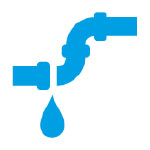

What are we doing to tackle leakage?
We’ve halved leakage levels in our region, but we know there’s more work to do. We'll be investing over £50 million in the next five years to help us achieve a minimum 15% reduction in leakage by 2025.
In the last two years we’ve doubled the number of leak detection staff and significantly increased the number of Customer Leakage Technicians. We’re building a state-of-the-art training facility for our team and we’ve also formed a new team, dedicated to looking at how we’ll achieve the 15% minimum reduction target.
As well as investing in our people and supply chain, we’ve made significant investment in technology. We’re using remote sensing technology. These are acoustic logging devices which are placed on the network and listen for leaks 24/7. We’re also trialling remote video link applications with customers which is helping us diagnose and resolve issues.
An exciting part of our mission to find and fix leaks quicker than before is our work with the University of Exeter through the Centre for Resilience in Environment, Water and Waste (CREWW). We have invested £10 million in CREWW and we’ll be working in partnership with the university to explore remote sensing innovations, in-pipe repair technologies and augmented reality programmes.
Working in partnership is key to helping us tackle leakage. We have a detection contract with Morrison Water Services and Kier were awarded our Network Service Alliance contract. Working with our supply chain partners means we can find and fix leaks 24/7; we have more people out looking for leaks, access to the latest technology and equipment, as well as benefiting from a wealth of expert knowledge within the industry.
What happens when a customer reports a leak?
What happens when I report a leak?
From the moment you report a leak there’s a lot going on behind the scenes, our teams work around the clock to find and fix leaks. They can be up in the small hours repairing leaks on busy main roads, or they could be baking under the summer sun as they stand knee-high in gushing water.
There are 5 steps to the process of finding and fixing leaks. Some of these steps involve co-ordinating our work with local councils and highways. As you can imagine, this can take time which means we can't fix some leaks as quickly as we would like.
We’re fixing more leaks than ever before and quicker too, with all identified leaks fixed in 3.6 days on average.
Click the stages below for more information:
- 1. Report
- 2. Detect
- 3. Plan
- 4. Fix
- 5. Reinstate
A leak is reported
- You can report a leak on our website, by WhatsApp, on Social Media or by calling 0800 230 0561 and speaking to one of our friendly team
- We’ll try to gather as much information as possible from you to help us locate the leak as quickly as possible and to understand the severity of the leak. We’ll then pass the details to our leakage team
- If the leak is affecting customers supplies or is causing damage or flooding, our inspector will attend within 3 hours
- Our inspectors will attend all other leaks by the end of the next working day
- Our field teams are also out and about looking for leaks every day.
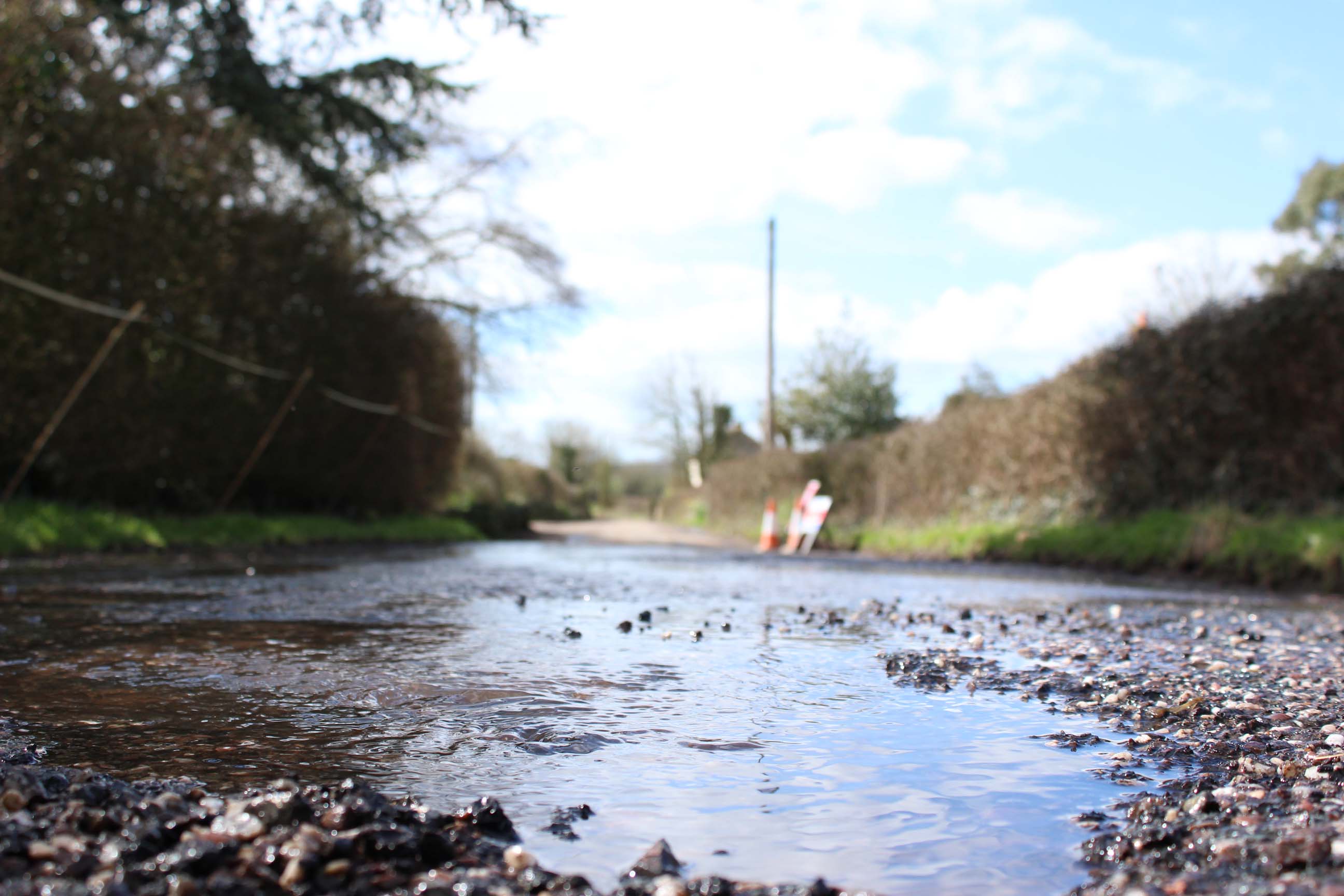
Detection
- Our team of field inspectors will investigate and find exactly where the leak is coming from and the severity of the leak
- You might see us with listening devices. Water moves around and it can be hard to pinpoint exactly where the leak is coming from
- It is rare that we can repair the leak on our initial detection visit. If the leak is directly from the meter chamber or stop tap this could be done, however most leaks require excavations to repair
- During the detection visit the inspector will survey for the works, details of location, traffic management, pipe sizes and materials, volume of leak, reinstatement type and materials and also any damage being caused or risk to supply interruptions
- We’ll mark the area with blue paint so our repair team know where to dig to fix the pipe.
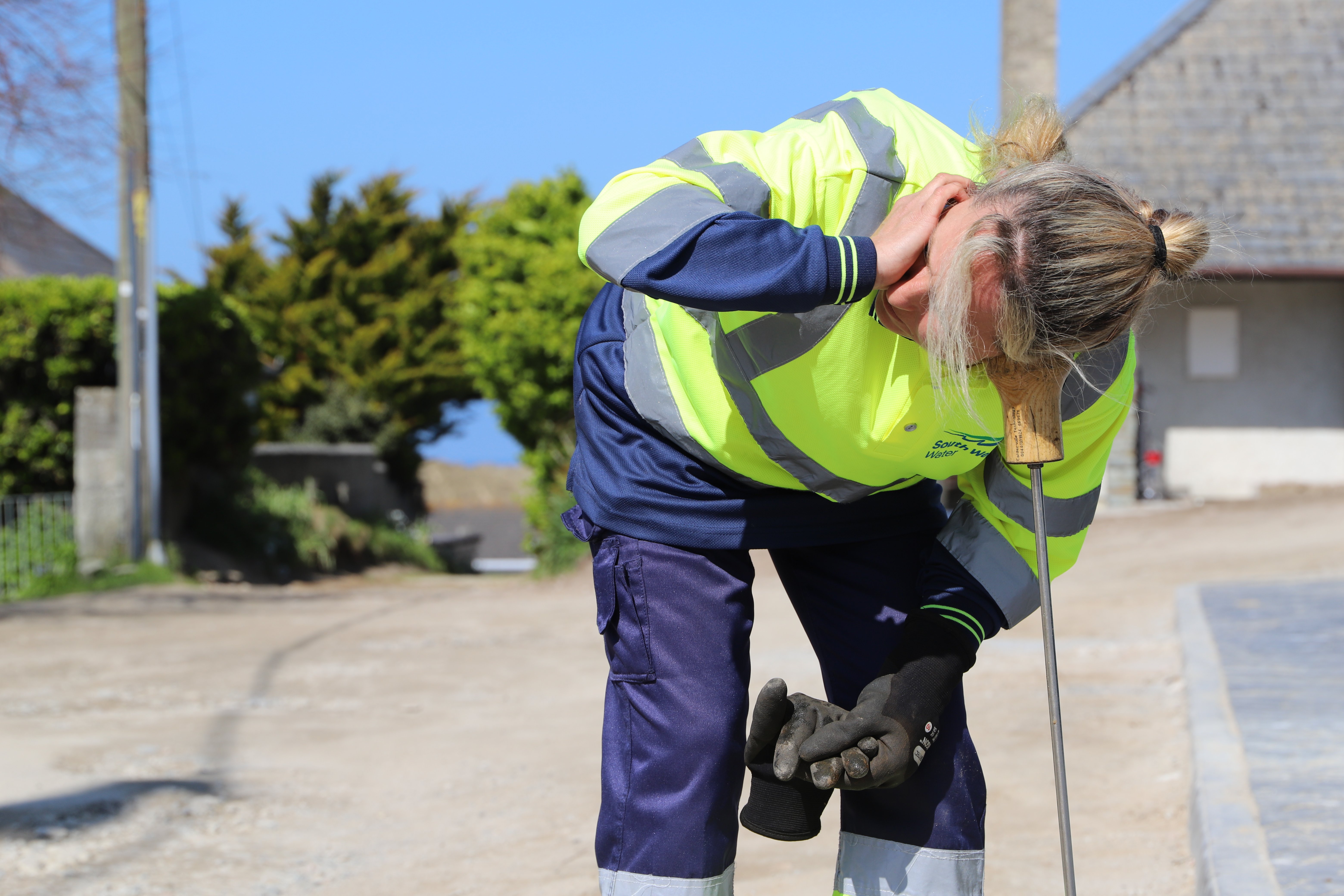
We plan the repair
- Depending on what our inspectors find, we’ll develop a plan and set a date to get the leak repaired
- We aim to repair significant leaks or leaks that are causing damage within 8 hours
- Leaks of a higher volume that are not causing immediate issues will be repaired within 2 working days
- We also aim to repair all of our smaller low volume leaks within 7 working days
- On average our leaks are repaired within 3.6 days
- We’ll assess the impact to customers. If the pipe serves hundreds, or thousands, of customers we'll need to create a plan which minimises interruption when we turn off the water to carry out repairs. This might mean we need to use water from another part of our pipe network and tanker into the area. Tankering is when we use our Alternative Water Supply vehicles and pump water into the system to keep the network flowing whilst we carry out repairs
- We often need to work with the local Highways Agency who have to grant us permission to work on the road, and we'll need to balance the urgency of our work with the impact on others who use the road. In an emergency this will be within hours, for non emergencies this may take up to 12 weeks
- Often roads have embargoes on them, for example we aren’t allowed on the Tour of Britain cycle route for some months prior to the event, unless there's an emergency. This is also often the case for traffic sensitive routes during peak periods
- We will of course always ensure the safety of the team who will be completing the repair and of the general public.
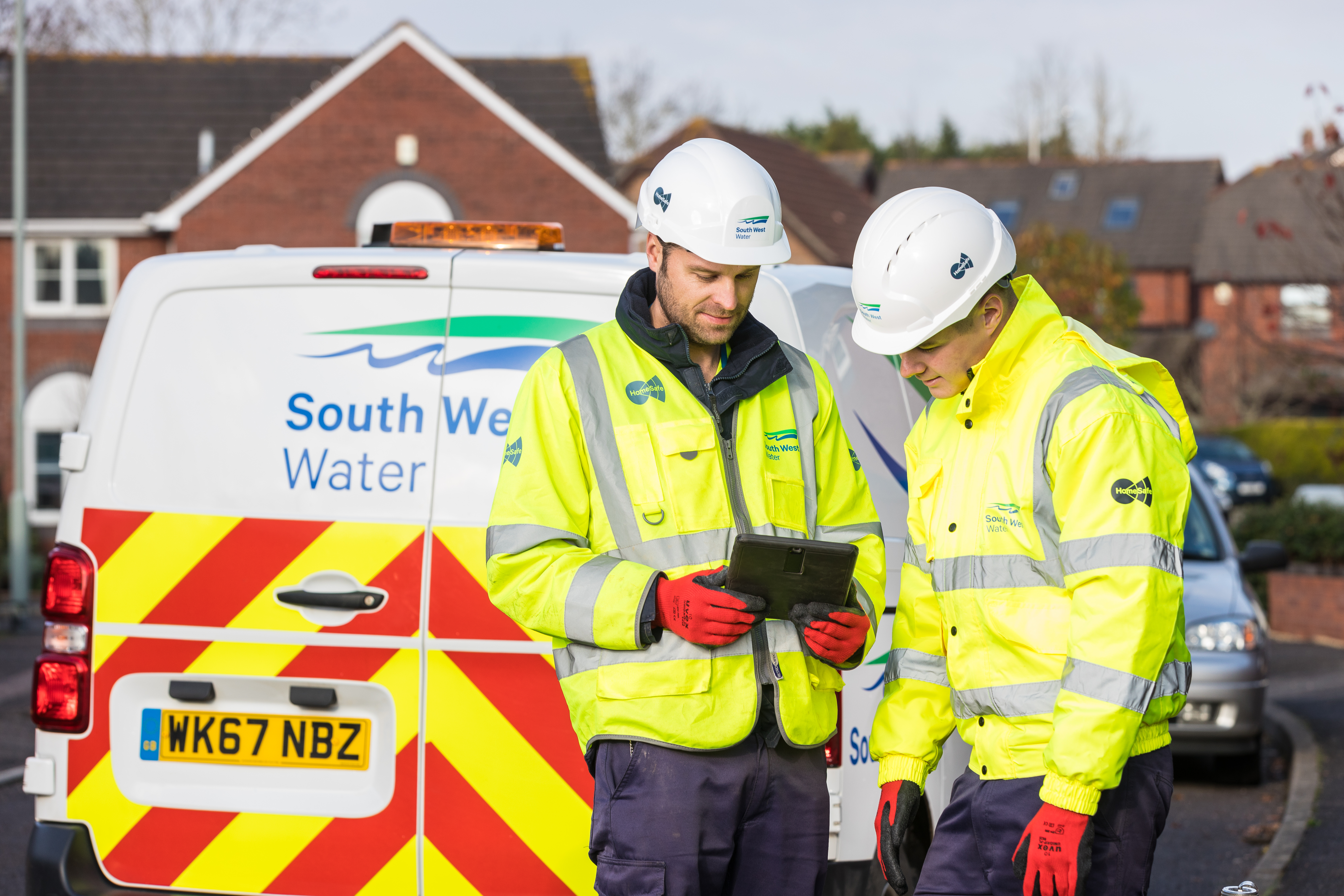
We repair the leak
- Our teams will attend on the allocated day to repair the leak
- We’ll always aim to repair the leak without turning off the supply, however sometimes this isn’t possible, but rest assured we’ll get the water back on as soon as we can
- Once the repair is completed, we’ll fill in the hole and permanently repair the road or pavement
- If another incident comes up that needs an emergency repair, our team may be called off the job to sort it out, and we’ll be back to complete the repair as soon as we can.
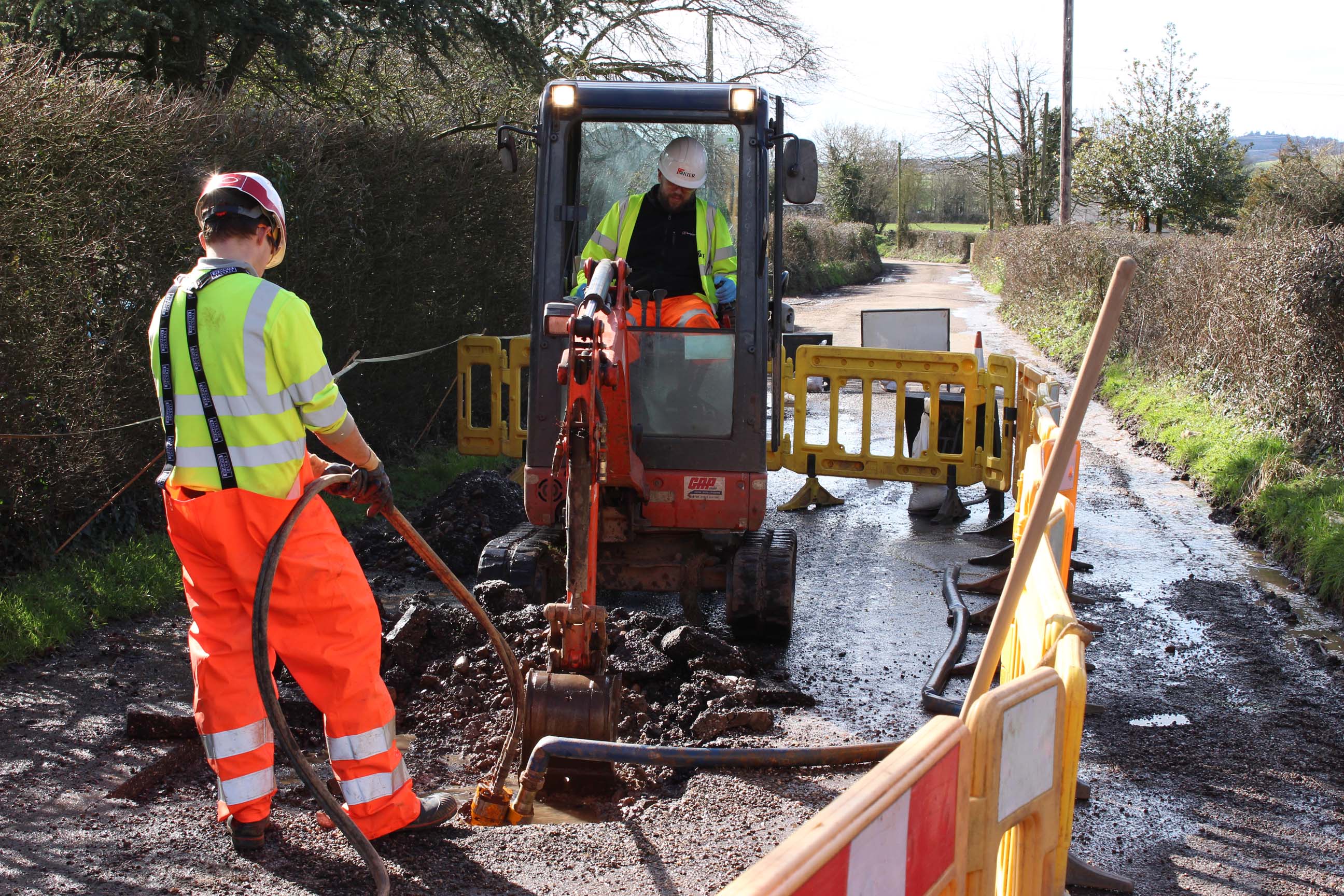
Completing the job
- In most cases we can put the area back to how it was by the end of the next working day including grass, gravel, pavements and the removal of any barriers or traffic management systems
- On some occasions it may take longer to reinstate the area as this is governed by the road opening license, however this will depend on road type, size of diversion and traffic management. This will generally incorporate road or surface type, some surfaces need longer cooling or setting time before they can be reopened. Larger excavations will require more time to settle as backfilling is required to prevent sinkage. Also, access to the site, size of digger and vehicles to be able to backfill and finish, overhead cables will also hinder this. An assessment of all of this will be factored in when applying for the road opening license
- We will always aim to reinstate as soon as possible and with the least disruption but we must also ensure the safety of the team and of the general public.
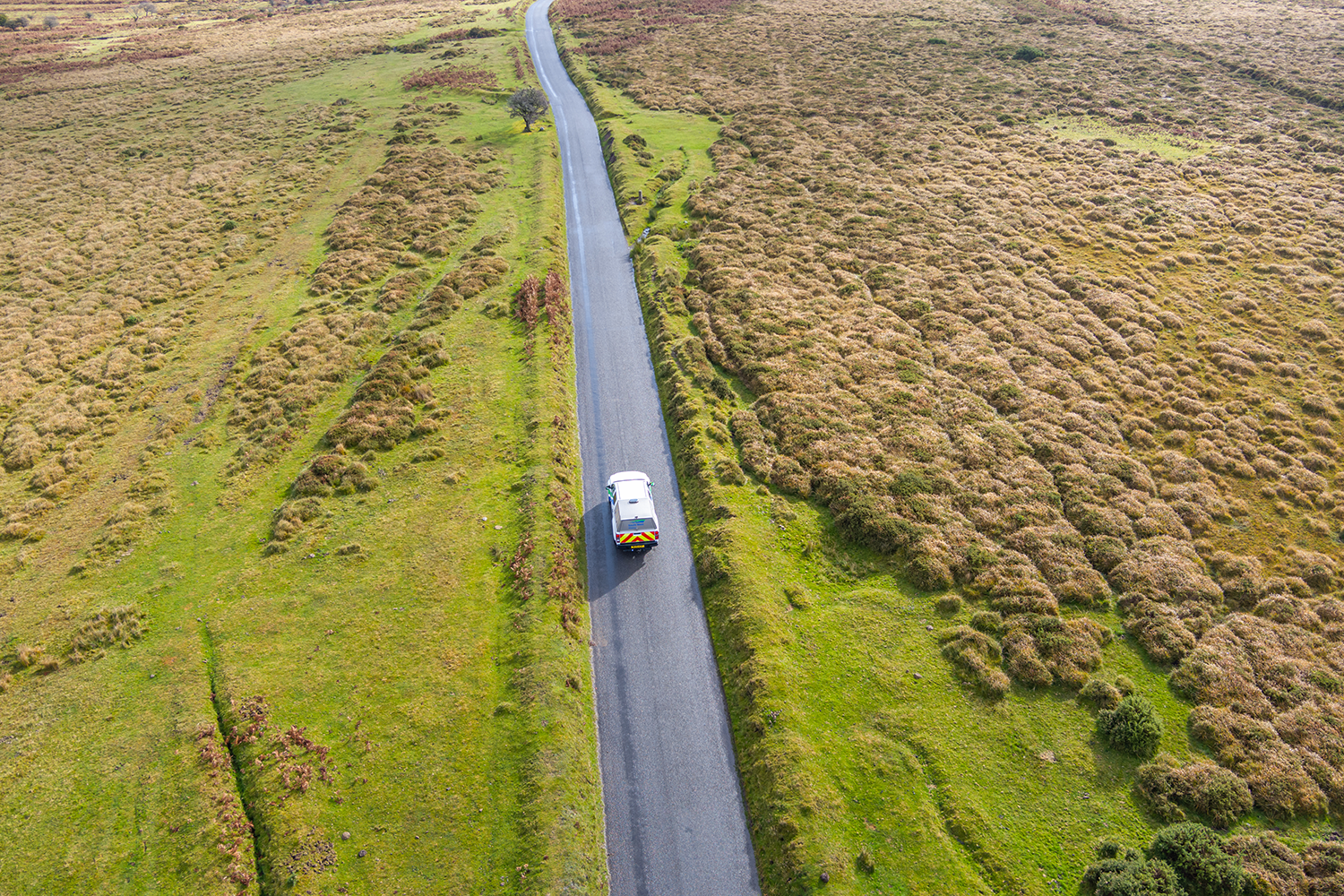
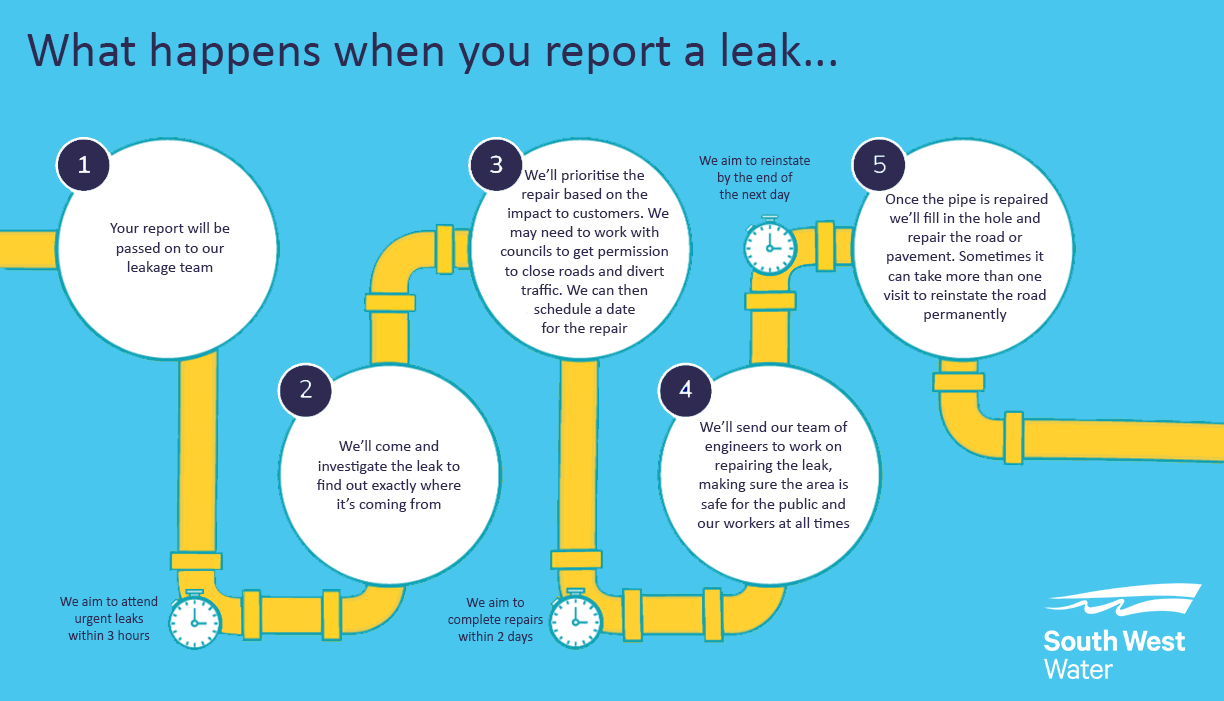
Why do leaks happen?
Whilst we’re working around the clock, 365 days a year, to reduce leakage and fix pipes as quickly as possible it’s important to note that leaks do, and will, occur.
Leaks can occur at any time, and there are a few reasons why. We have over 9,000 miles of pipework laid underground, ground movement can put a strain on our pipework. The colder months in winter can mean our metal pipework shrinks which in turn causes leaks. Severe weather such as freezing temperatures, followed by thaws, cause freezing of water in our pipes and ground movement which results in increased leakage on our network. Equally, prolonged dry weather can cause the earth to shrink. Extreme demands on our system can also put a strain on our pipes - there's only so much water we can pump through the network.
To minimise disruption and keep taps flowing for customers we've recently invested c.£3million to help us keep customers in water even if there’s a burst or we’re making a repair. This includes a new fleet of tankers and 18 new technicians, meaning we can act more rapidly and plan repairs without needing to affect supplies to customers.
